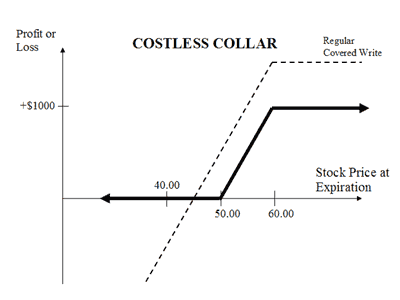Nov 25, 2019
Larry Berman: The biggest hedge fund in the world has added a hedge
By Larry Berman

When Ray Dalio - founder of Bridgewater, the largest hedge fund in the world - buys put protection on the S&P 500, people should pay attention. It was all over the business news media late last week. I’ve said for years that BNN Bloomberg viewers should read everything Dalio writes—including options.
What Dalio may have done was use an option position called a collar. The purchase of a put paid for by writing (selling) a call. There are a number of ways this can be implemented. According to some reports, it looks like he added the strategy at a debit, meaning a cost to the fund of 70 basis points (0.7 per cent). Looking at the return-to-risk ratio of a costless collar in the diagram below is the basis for understanding how this strategy works. Dalio paid a premium to add the hedge, but it can be done for free.

Just looking at the costs of the hedge to try and figure out what he did: An April at-the-money (ATM) put on the SPY ETF for an April 17 expiry trades at US$11.29 at Friday’s close. To calculate the dollar value of 70 bps, it’s approximately 70 per cent of the current US$311 value that SPY is trading at or about US$2.18. To pay the (US$9.11) balance of the cost for an ATM US$311 put (US$11.29-US$2.18), he may have sold a US$314 call for US$9.18. That would allow him to stay long and earn the dividend between now and April (0.8 per cent) plus about 1 per cent in terms of potential capital gains between US$311, the current level, and US$314, where he would have sold the upside away with his short US$314 put position. This collar would protect 100 per cent of any downside. The return-to-risk ratio of adding this hedge with the markets so overbought is excellent.
One of the major benefits of a collar strategy is that it allows you to stay invested in the stocks you like and not triggering a tax event when they are sold, as opposed to using the option strategy to mitigate (hedge) the market risk. This strategy is something I use for clients. Currently, we have similar hedges in our QW growth portfolio. We are long some of the best dividend-paying stocks globally, but the downside market risk is hedged with put protection. It allows us to still grow the portfolio by focusing on owning the best higher-yielding companies while mitigating sleepless nights.
I love the use of option strategies to mitigate volatility risks as well as generating yield. I often get asked the question: ‘Is it time to sell?’ If you understand how to use options, you may not have to in the future. Increasingly, with the bond market perhaps impaired from a real yield perspective, a basket of higher yielding equities is very attractive if you can manage the market risk. I talk about many of these types of option strategies in my current roadshow.
We are in the closing stretch of our BNN Bloomberg Investors’ Guide to Thriving tour (Fixing Fixed-Income). Bond yields are likely to remain low for many reasons, one of which is global demographics and the other is the massive existing debt burden. As we age, we need our money to last longer and low real interest rates (after inflation eats away your purchasing power) are a huge tax on incomes. And while rising stock markets help, they only really help the top third of the population that benefits from exposure. The bottom half of people have little-to-no income impact from the wealth effect of rising asset prices due to low savings rates, but are hurt most from low rates in retirement as they require the safest retirement income. The safe bond part of your portfolio is broken, perhaps permanently impaired for decades. You will need to learn to get creative to enhance your real return on your fixed-income and gold is part of that way of improving your portfolio. Come out and learn how.
Register free at www.etfcm.com and make your donation here.
Larry Berman on Tour
| City | Date |
|---|---|
| Victoria, B.C. | Wed. Nov. 27, 2019 |
| Langley, B.C. | Thurs. Nov. 28, 2019 |
| Vancouver, B.C. | Sat. Nov. 30, 2019 |
Follow Larry online:
Twitter: @LarryBermanETF
LinkedIn Group: ETF Capital Management
Facebook: ETF Capital Management
Web: www.etfcm.com





